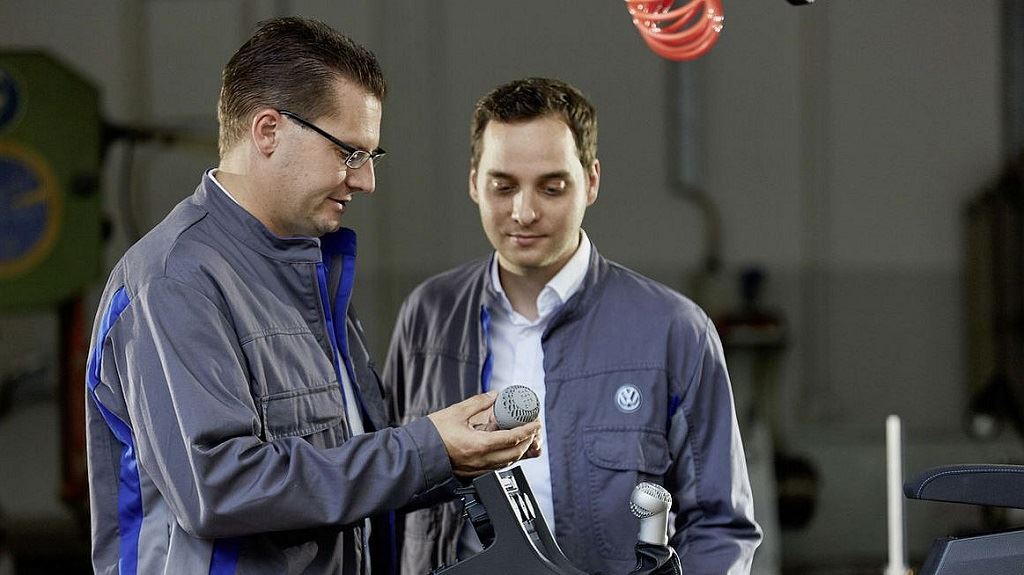![[Image: Volkswagen]](https://fabbaloo.com/wp-content/uploads/2020/05/Volkswagen-metaljet_img_5eb09368271ab.jpg)
We are on the precipice of widespread economic and societal change, as disruptive technologies like 3D printing, AI, robotics, and the Internet of Things drive manufacturing’s analog-to-digital transformation. As with other leaps forward in science, technology, industry and culture, universities will play a central role in driving this disruption by transforming the entire culture of design and creating a new breed of 3D innovators.
3D printing is changing the face of manufacturing—from engineering and design, to operations and supply chain. Demand for students who can “think in 3D” will become increasingly more urgent as the adoption of 3D printing accelerates.
3D printing is brimming with potential for universities. Professors and departments who take advantage of these trends will find themselves and their organizations well-positioned for innovation, growth, and peace-of-mind.
Developing 3D Printing Skills and Confidence
Your students have much to learn and need to figure out how and when to use 3D printing to solve problem sets. This may mean transitioning their knowledge from the consumer grade 3D printers they may have used in high school to more advanced—but still easy to use—industry quality machines. This is crucial for undergrads who can become disheartened as they jump to using new technology that is too complex. Devices like industrial 3D printers are designed from the ground up for convenient in-house production, limited in-person monitoring and high throughput, dramatically simplifying the learning process for the students.
Accessibility Matters
Production-grade 3D printing has historically been out of reach for many universities for several reasons. While many schools have basic makerspaces and innovation labs with desktop 3D printers, not as many are equipped with industrial 3D printers. Either the sheer size of the printer wouldn’t even fit through the building door, or the price point was simply too high. But with the democratization of 3D printing and lower barrier to entry, it’s easier than ever for universities to embrace this technology and get access to world-class capabilities in additive manufacturing.
For example, today there are lower price point solutions in the $50,000s, making it more affordable for universities to prototype with the same technology as full-scale production. And a compact footprint of the device is essential, so the machine can be comfortably integrated into your learning environment.
Unlocking Creativity with Rapid Prototyping
Students learn by doing. And the faster the design cycle, the more students can get real-time feedback on their ideas. So it’s important to look at 3D printers that reduce the turnaround time on making prototypes from weeks to days, enabling your students to repeatedly test and refine without waiting. And with innovations like HP Multi Jet Fusion technology, once prototypes are complete, they can then move to full-scale production if desired, all on the same 3D printing platform that they’re already familiar with. Plus, they’ll enjoy the bonus that this technology is what they’ll see and experience when they start their careers too.
Thinking Differently with a New Design Mindset
A centrepiece of what 3D printing enables is freedom of thought, providing the unique ability to design something never before imaginable. When students are no longer held back by prior limitations, they can rethink their entire approach towards making parts and products, opening up a whole new world of 3D design and application possibilities.
Leading 3D software companies have harnessed this disruption by incorporating support for 3D printing technology into their products both early and effectively, so you can rest assured that your students can get a head start on taking their creations to a new level instead of playing catch-up in coming years.
Never Stop Learning
The disruptive promise of 3D printing and digital manufacturing is massive, and has the potential to help make life better for everyone, everywhere. But this industry isn’t standing still. Every day innovators are using new tools and creating an endless amount of applications that will have a meaningful impact on people around the world.
That’s why it’s paramount for professors to push their students to continue learning new ways to solve problems with 3D printing. Look to your peers in the higher education community for best practices, such as Clemson University, who are advancing innovation in their Colleges of Engineering, Computing and Applied Sciences. And to apply inspired thinking and fresh perspectives, augment your own deep knowledge by expanding outside the education arena. Consider learning from the automotive industry for example, where manufacturers like Volkswagen, the largest auto maker in the world, are embracing 3D printing in its long-term roadmap.
By developing your own capabilities, you are not only raising the institutional profile of your university, you are empowering your students to hone their 3D printing skills to become even more competitive in the digital manufacturing workforce and entrepreneurial communities of tomorrow.











CoreXY is becoming a very popular approach for 3D printer motion systems, but is it the ultimate answer? We list the advantages and disadvantages.